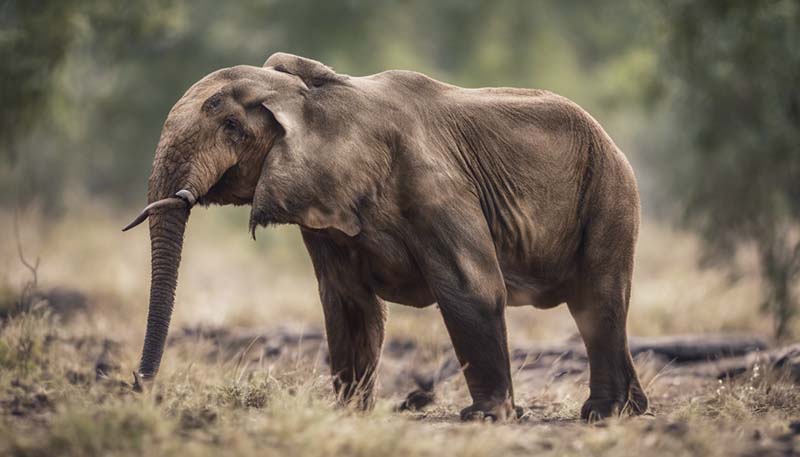# Wildlife Corridors: Preserving Biodiversity in Human-Dominated Landscapes
## Introduction
The increasing encroachment of human activities into natural habitats has led to a significant loss of biodiversity. As a result, the concept of wildlife corridors has emerged as a strategic approach to mitigate this loss by connecting fragmented habitats, allowing for the movement of species and the maintenance of ecological processes. This article explores the importance of wildlife corridors, their role in preserving biodiversity, and the challenges faced in their implementation within landscapes dominated by human activities.
## The Importance of Biodiversity
Biodiversity refers to the variety of life on Earth, encompassing the genetic diversity within species, the variety of species themselves, and the diversity of ecosystems they form. It is crucial for the health of our planet as it ensures the resilience of ecosystems, supports food security, and provides a wide range of ecosystem services, including water purification, pollination, and climate regulation.
Advertisement
## The Role of Wildlife Corridors
Wildlife corridors are strips of natural habitat that connect isolated patches of land, enabling wildlife to move safely between them. These corridors are vital for several reasons:
1. **Gene Flow**: They facilitate the exchange of genetic material between populations, reducing the risk of inbreeding and promoting genetic diversity.
2. **Migration**: Many species, such as elephants, wildebeest, and birds, undertake seasonal migrations. Corridors provide safe passage for these journeys, which are essential for feeding, breeding, and maintaining life cycles.
3. **Habitat Conservation**: By connecting fragmented habitats, corridors increase the overall size of the habitat network, which can be critical for the survival of wide-ranging species.
4. **Ecosystem Resilience**: They contribute to the resilience of ecosystems by allowing species to shift their ranges in response to environmental changes, such as climate change.
## Designing Wildlife Corridors
The design of wildlife corridors must consider several factors to be effective:
1. **Species Requirements**: Different species have different habitat needs and mobility patterns. The corridor must be suitable for the species it is intended to benefit.
2. **Connectivity**: The corridors should be continuous and unobstructed to ensure safe passage for wildlife.
3. **Ecological Integrity**: They should be designed to maintain ecological processes, such as pollination and seed dispersal.
4. **Landscape Features**: The corridors should take into account the natural landscape features, such as rivers and mountain ranges, which can act as natural barriers or conduits for movement.

5. **Human Impact**: The potential impact of human activities, such as agriculture, urban development, and infrastructure, must be minimized.
## Challenges in Implementation
Implementing wildlife corridors in human-dominated landscapes presents several challenges:
1. **Land Use Conflicts**: There is often competition for land between conservation efforts and human activities such as agriculture, urbanization, and industrial development.
2. **Political Will**: The establishment of wildlife corridors may require cross-jurisdictional cooperation, which can be difficult to achieve.
3. **Funding**: Creating and maintaining wildlife corridors can be expensive, and funding can be a significant barrier.
4. **Community Involvement**: Local communities may not see the benefits of wildlife corridors and may resist their implementation if they feel excluded from the decision-making process.
5. **Monitoring and Management**: Effective wildlife corridors require ongoing monitoring and adaptive management to respond to changing ecological and human pressures.
## Case Studies
Several successful examples of wildlife corridors exist around the world:
1. **The Yellowstone to Yukon Conservation Initiative**: This is a 2,000-mile long corridor that aims to protect and connect habitats from Yellowstone National Park in the United States to the Yukon in Canada.
2. **The Green Belt Movement in Kenya**: This initiative involves the planting of trees to create a network of green corridors that protect wildlife habitats and provide resources for local communities.
3. **The European Wadden Sea**: A network of protected areas and wildlife corridors along the coast of the North Sea, this area supports millions of migratory birds.
## The Future of Wildlife Corridors
The future of wildlife corridors depends on innovative thinking, international cooperation, and the integration of conservation efforts into broader land-use planning. Emerging technologies, such as remote sensing and GIS, can aid in the planning and monitoring of these corridors. Additionally, the involvement of local communities and the promotion of ecotourism can provide both social and economic incentives for their establishment and maintenance.
## Conclusion
Wildlife corridors are a critical tool in the conservation of biodiversity in a world increasingly shaped by human activity. They require careful planning, robust scientific backing, and the support of local communities and governments. As we continue to urbanize and develop, the need for such conservation measures will only grow, making the creation and protection of wildlife corridors an imperative for the future of our planet's rich and varied ecosystems.
---
This article provides an overview of the topic, highlighting the importance of wildlife corridors and the challenges in establishing them within human-dominated landscapes. It also offers a glimpse into successful case studies and considerations for the future.
Comment